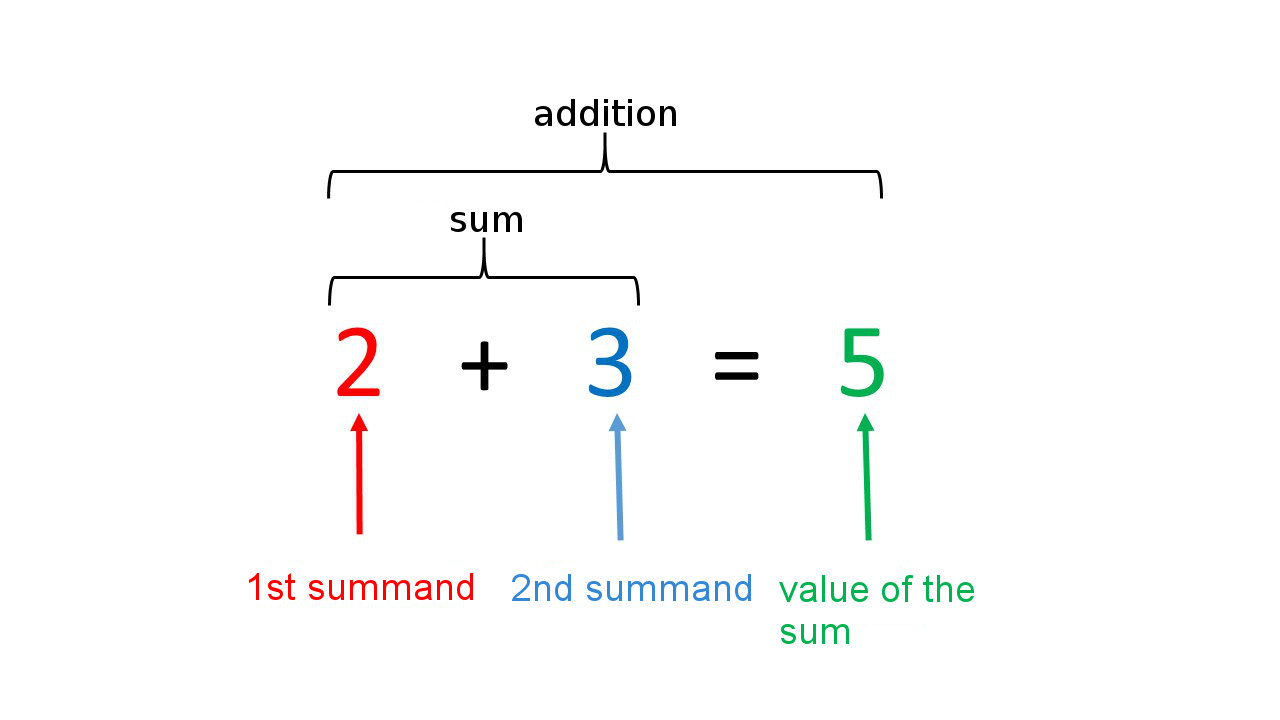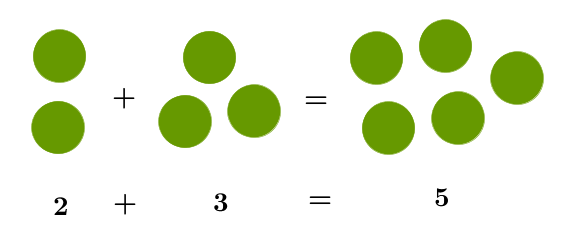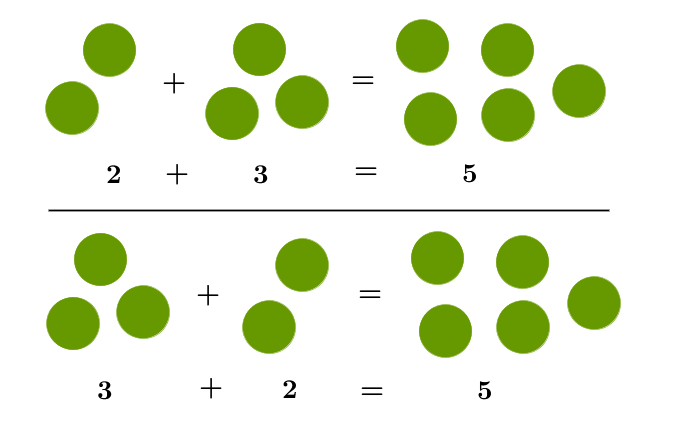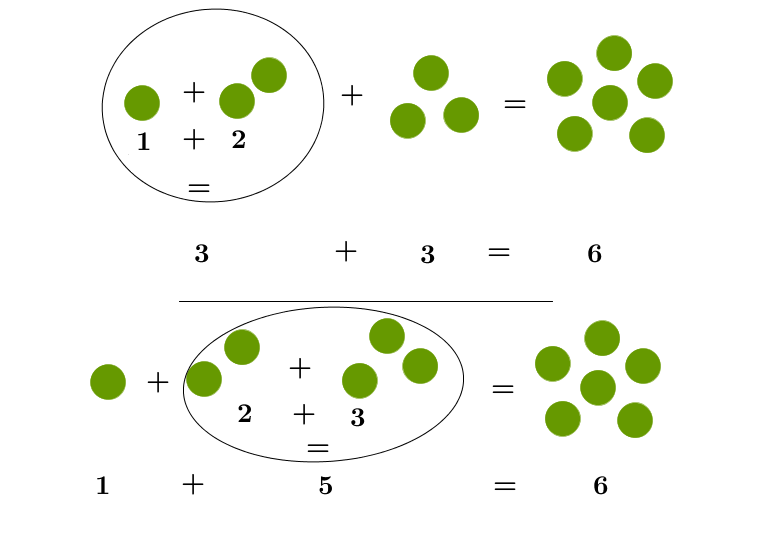Addition
Addition is one of the four basic arithmetic operations. Numbers which you want to add are called summands, the term "1st summand + 2nd summand" is called a sum and the result is usually called the value of a sum.

Example
If Peter has two marbels and Kira three, they have five in total.

Arithmetic laws
Changing the order of two summands: Commutativity
It does not make a difference whether you calculate "1st summand + 2nd summand" or "2nd summand + 1st summand".
Example
If Peter has two marbels and Kira three, they have five in total.
If Peter has three marbels and Kira two, they still have five in total.

Associativity
When adding more than just two summands, brackets show which numbers should be summed up first.
If you want to calculate
If you want to calculate
Example
Peter has one marble, Kira two and Michi three. Peter and Kira add their marbles and then Michi adds his marbles to theirs.
Kira and Michi add their marbles. Peter adds his marbles afterwards.

They have a total of six marbles.
A special number: Zero
Adding a number and zero always equals the number itself. You can just "forget" about the zero.
Examples
Zero is the only number with this characteristic.
Addition of small numbers
There are several ways of adding two one digit numbers.
Addition on a number line
When adding numbers on a number line, you can think of taking little steps. If you want to calculate 2+3, you can imagine taking three steps to the right starting on a spot called "2".

Counting steps isn't that hard, but when adding numbers with a higher value it might take a longer time.
Addition table
In order to learn how to calculate numbers with higher values, you should start by learning how to sum up one digit numbers. This table may help you:
+ | 0 | 1 | 2 | 3 | 4 | 5 | 6 | 7 | 8 | 9 |
|---|---|---|---|---|---|---|---|---|---|---|
0 | 0 | 1 | 2 | 3 | 4 | 5 | 6 | 7 | 8 | 9 |
1 | 1 | 2 | 3 | 4 | 5 | 6 | 7 | 8 | 9 | 10 |
2 | 2 | 3 | 4 | 5 | 6 | 7 | 8 | 9 | 10 | 11 |
3 | 3 | 4 | 5 | 6 | 7 | 8 | 9 | 10 | 11 | 12 |
4 | 4 | 5 | 6 | 7 | 8 | 9 | 10 | 11 | 12 | 13 |
5 | 5 | 6 | 7 | 8 | 9 | 10 | 11 | 12 | 13 | 14 |
6 | 6 | 7 | 8 | 9 | 10 | 11 | 12 | 13 | 14 | 15 |
7 | 7 | 8 | 9 | 10 | 11 | 12 | 13 | 14 | 15 | 16 |
8 | 8 | 9 | 10 | 11 | 12 | 13 | 14 | 15 | 16 | 17 |
9 | 9 | 10 | 11 | 12 | 13 | 14 | 15 | 16 | 17 | 18 |
How to use a calculation table
Look for your first summand in the left column
Look for your second summand in the first row
Put a finger on each of your summand values
Where could your fingers meet when sliding along the columns and rows? The meeting point value equals the value of your sum.
Exercises
What is the value of the sum? Add by using the calculation table:
1) 9 + 4
2) 8 + 2
Written method of addition
The easiest way to calculate larger numbers is to use the written method of addition. Write the second summand underneath the first one. Start by adding the ones, then the tens and the hundreds.
Example
Adding the ones: Write a zero beneath the ones and a little 1 next to the ten of the second summand.
Adding the tens: Write an eight beneath the tens. Don't forget adding the little 1!
Adding the hundreds: Write a 3 beneath the hundreds.
The result is 380.
Special types of addition
Are you looking for something else? Further explanations:
Adding fractions
Adding vectors
Adding numbers with negative values
Exercises
Loading
Loading
Loading
You can find more exercises in the following folder::
Exercises: addition of natural numbers